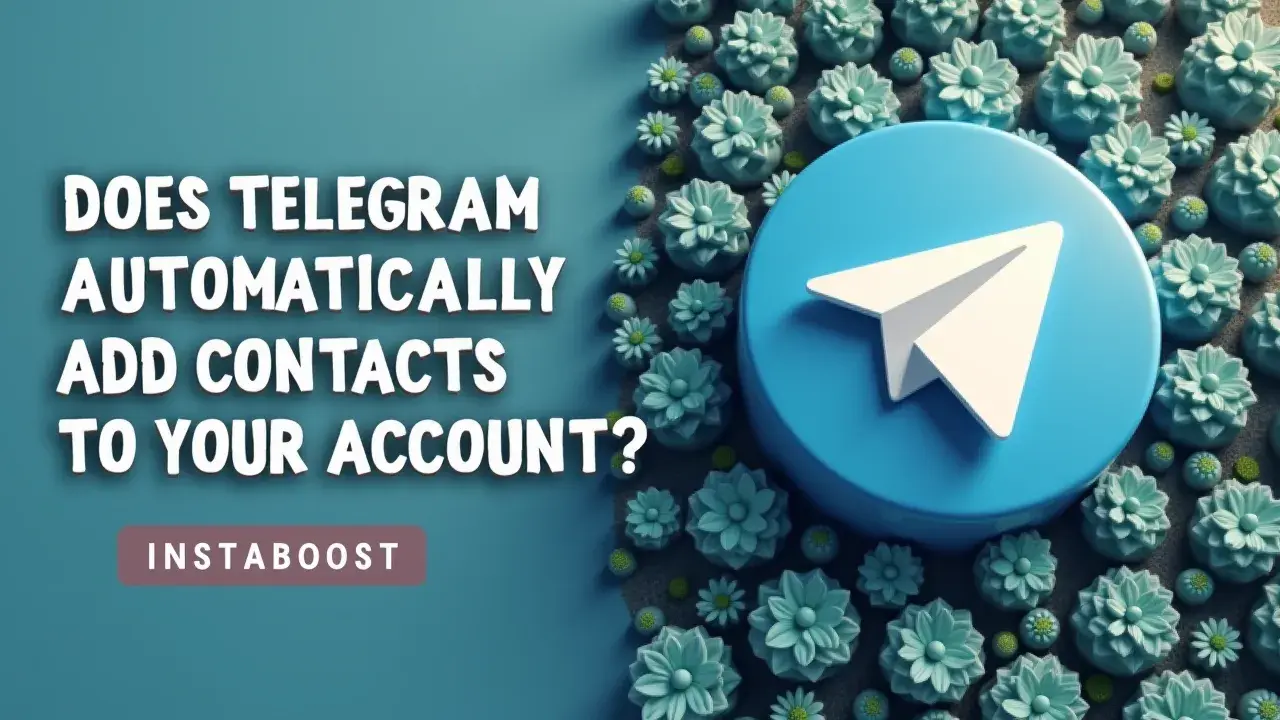Does Telegram Automatically Add Contacts to Your Account?
Telegram can sync contacts based on your settings, so additions happen only when contact sync is enabled. Reviewing preferences early lets you control who appears, keeping your list focused and manageable. Adding someone keeps your number private by default, which supports quick connections and clearer response tracking without exposing personal details. A brief setup check helps maintain a clean list and encourages more meaningful chats in the first week.
Why Your Contact List Grows – and What That Signals
If you’ve opened Telegram and noticed familiar names show up without tapping Add, that’s sync, discovery, and privacy defaults working together. Telegram can read your phone’s address book and surface matches within the settings you choose – and that’s the lever. If you want quick reach and faster replies, turn on contact sync on a primary device and pair it with clean analytics. Label your first week of chats, note reply times, and archive low-signal numbers so the list stays useful. If you’re building a team or creator community, a reputable CRM export and a one-time import through a verified client can spark early momentum, especially if you line up welcome messages with real comments and creator collabs that cue genuine engagement, and some teams even benchmark against third-party growth baselines such as Telegram boost packages to calibrate pacing without changing their opt-in rules.
If you prefer tighter privacy, keep your number hidden by default while letting people find you by username. That’s ideal for targeted promotion where discovery matters but exposure doesn’t. The smart move isn’t on or off – it’s matching sync to intent. Go full sync for retention signals and warm intros, use username-only for broader reach, and run segmented lists when you’re testing campaigns. Set a monthly review. Prune bounces, tag high-response contacts, and track how many chats turn into ongoing threads.
That small discipline turns automatic additions into a controlled growth channel instead of a messy address book. And if you invest in paid accelerants like sponsored messages or Telegram Ads, align them with opt-in entry points and track post-click replies so contact growth reflects real conversations, not just impressions. With a five-minute settings check and a simple testing loop, you keep control while letting Telegram speed up connections.

Signals You Can Trust: How Sync Builds Credibility, Not Clutter
Data doesn’t lie, but it rarely speaks clearly. When your Telegram contact list grows “by itself,” it isn’t randomness. It’s your sync settings cross-referencing your address book with Telegram’s user directory and the privacy defaults you accepted. Treat it like an opt-in discovery engine. If you enable contact sync on your primary device and keep one phone book clean, Telegram will surface people you already know, which is why “Does Telegram automatically add contacts” feels accurate in practice. The credibility play is in how you validate those additions.
Pair sync with clean analytics and simple retention signals like reply latency, read rates on your first message, and whether new contacts interact without nudges, and consider how lightweight probes align with Telegram user engagement tools you already track. If early momentum matters, add a light, targeted promotion or a small creator collab to seed initial conversations, then watch whether real comments outpace canned reactions. Paid accelerants can work when they’re from reputable sources matched to your intent. Use them to test whether surfaced contacts turn into actual chats, not vanity counts.
A quick settings audit – contact sync on for the main device, off for secondary devices used for testing – prevents duplication and keeps your attribution honest. Privacy-wise, Telegram typically shields your phone number in adds, which lowers friction for outreach while keeping safeguards intact. That’s a smart default for lead nurture without oversharing. The non-obvious insight is that sync isn’t just convenience. It’s a built-in qualification layer. If someone appears after sync, you already have context, so your first message can be specific and timely. That specificity is the difference between a contact and a conversation, and it’s what turns discovery into measurable growth.
Calibrate Sync for Outcomes, Not Noise
You don’t fix chaos by pushing harder. You fix it by deciding what “added automatically” should do for you and setting Telegram to match. Anchor contact sync to one primary device and one clean address book – duplicative or stale entries turn discovery into fog. Pair sync with intent-based segments. Tag contacts in your phone as clients, leads, partners, or friends before syncing, so when Telegram surfaces them, your outreach already has lanes. If you’re using Telegram for business or creator work, layer in retention signals – message open patterns, reply velocity, and real comments – not just raw contact growth; when you need simple visibility checks, I sometimes get noticed with Telegram views as a quick sanity marker alongside replies and reach.
A small, qualified promotion or a reputable contact importer can be a smart accelerant when it’s measured. Test a cohort, track replies in 48 hours, and prune quietly if the thread stays cold. Treat privacy controls as part of the lever, not a brake. Keeping your number hidden by default lets you run targeted promotion and creator collabs without oversharing, and it reduces reply friction. If you need broader reach, enable sync briefly to capture warm matches, then turn it off and maintain the list with weekly hygiene. For teams, set a shared naming convention and a testing loop so you can attribute outcomes to a specific sync window, not guesswork.
This is how “Does Telegram automatically add contacts” becomes strategic – it works when your settings, segments, and analytics move together. One crisp rule of thumb: let Telegram find people you already know, then let your measurement decide who stays. That turns auto-add from a mystery into a predictable pipeline, and you’ll feel it in faster replies and fewer dead threads within a week.
When “Auto-Add” Feels Pushy: Define the Boundary, Then Measure It
You can run the playbook and still feel lost. That’s often because “automatic” is doing two jobs at once – discovery and enrollment. Telegram’s contact sync can surface people you know and drop them into your list, but whether that helps or hinders depends on how you instrument it.
Treat “added automatically” like a funnel you design on purpose. Keep sync on for your primary device, then cut uncertainty with two safeguards – one clean address book and one intent layer. The clean book removes duplicates and stale numbers. The intent layer tags contacts before sync so your inbox naturally groups around clients, leads, partners, and friends. Pair that structure with small, trackable touches – a templated hello for leads, a warmer note for partners, and a low-friction follow-up two days later. Use Telegram’s privacy defaults to your advantage; while you’re tuning cadence and message shape, it helps to remember how post visibility signals can skew perception of lift, as with Telegram post visibility via emojis and other lightweight reactions.
If you run paid accelerants like targeted promotion or creator collabs to seed early momentum, route new replies into your tagged lanes and watch retention signals – opens, time to first response, second-message rate – instead of raw additions. This is where people confuse growth with noise. The useful question isn’t “How many contacts did Telegram add?” but “How many moved one step?” A qualified CRM bridge or reputable contact-cleaning tool is a real lever when it matches your volume and is measured against a clean analytics baseline. In short, Telegram doesn’t make messy lists – messy inputs do. Set the boundary, label intent, sync from one source, and “auto-add” becomes an engine you can tune rather than something you blame.
Ship the Signal: A Clean Sync That Pays for Itself
This might haunt you – good. If “automatic” still feels foggy, turn it into a growth test you can actually win. Treat Telegram’s contact sync like a channel, not a switch. Set a weekly review to see who surfaced, who engaged, and who converted into conversations that matter. A simple tracker is enough – contact source, tag, first reply time, and outcome – so you can cut noise and double down on contacts that move. If you use paid accelerants like targeted promotion, creator collabs, or lead-gen ads, tie them to a reputable list-cleaning pass and a single primary device before syncing, and keep your tooling tidy with a single view of Telegram marketing tools alongside your CRM.
Scrubbing duplicates and stale numbers keeps “auto-add” from bloating your list and dragging down response rates. Pair outreach with retention signals – consistent reply windows, real comments, and a light nurture cadence – so added contacts keep moving after the first hello. For teams, route sync through one clean address book and use role-based tags like client, lead, partner, or friend so enrollment mirrors your lanes. Discovery should feed your pipeline, not your anxiety. Privacy-wise, Telegram keeps your number private by default, so you can test faster without oversharing. Just confirm who can find you by phone and tighten group visibility if you run campaigns.
The non-obvious unlock is to make “add” contingent on intent. Only enroll contacts that match a current play – new offer, support ramp, event follow-up – and archive the rest for later discovery. That way, whether Telegram automatically adds contacts stops being the question. The question becomes whether each addition earns its keep, measured by replies, next steps, and clean analytics. That’s how contact syncing shifts from pushy to profitable.















